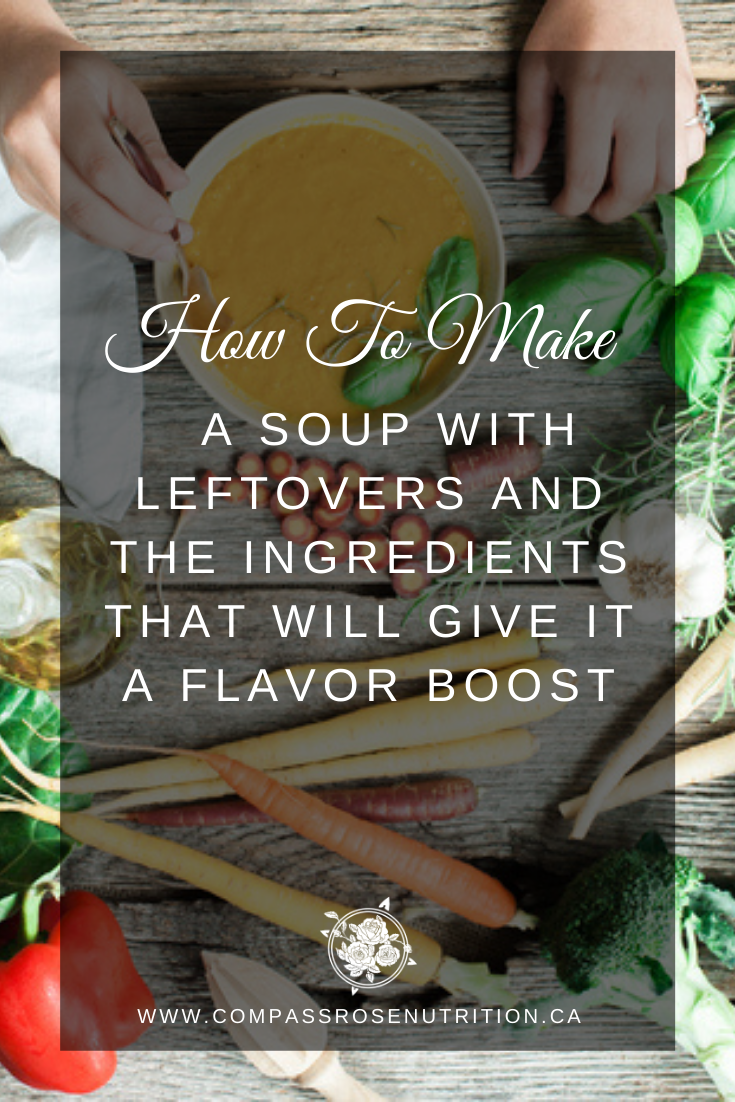It’s time for your weekly grocery trip, but you still have a few veggies hanging around that you don’t want to throw out. What can you do with them?
Nobody likes to waste unused groceries. Before throwing out those tomatoes (or whatever you have available), the next time you’re cleaning out your fridge, make a delicious, hearty soup with your leftover groceries.
Here are the steps to make a perfect soup with your leftovers every time, so no more food goes to waste.
1. Choose Your Liquid
Liquid makes up the base of your soup, but it doesn’t have to be the most exciting ingredient. If you have vegetable, chicken, or beef broth on hand, use it for a flavorful base. If you’re making a creamy soup, you may choose an alternative milk as your base, such as full-fat coconut milk.
2. Sauté Your Veggies
Now comes the fun part— cleaning out your fridge. There are no rules for making soup; you can use any veggies that you like. If your fridge is empty, you can also add canned or frozen veggies -- the options are endless. Before adding them to the broth, sauté any tough vegetables, such as bell peppers and carrots, in a pan with oil. You should also add all your spices and seasonings during this step. This will ensure that the veggies are nice and soft and that the spices have released their aromas and flavors.
3. Add an Acidic Ingredient
Regardless of the soup you make, it needs an acidic ingredient, such as citrus juice or vinegar. Depending on what you have at home and what soup you’re making, you can use cooking wine, apple cider vinegar, lemon juice, red wine vinegar, or whatever else you prefer. The acidity adds flavor to the soup and breaks up some of the sweetness from your veggies, especially if you use tomatoes. Add your acidic ingredient to the veggies and let them cook for a few minutes.
4. Add a Source of Carbohydrates and Protein
Unless you want to make a light soup, adding protein and carbohydrates is necessary to make a filling meal. You can add rice, quinoa, barley, or potatoes as a source of complex carbohydrates. Beans and legumes, such as lentils or chickpeas, are affordable and healthy sources of plant-based proteins and carbohydrates. They are also full of fiber and have a long shelf-life, so you can always keep some in your pantry. If you’re adding meat, you may also put your cooked meat in the pot now.
5. Add the Liquid
Finally, add the liquid broth to your ingredients. Allow the soup to simmer until all your ingredients are cooked and the flavors have mixed. The timing will depend on the ingredients you use and the type of soup you’re making. It’s that simple! Now, enjoy, and feel proud that you used up all your leftovers.
Ingredients That Will Give It A Flavor Boost
Now that we have got the basics of how to make a soup with our leftovers we need to think about ingredients or spices. Few ingredients have the power to single-handedly transform a dish with their flavor. These are the ingredients you always want to have in your kitchen pantry, so you can quickly make a flavorful meal without wasting time and money on dozens of ingredients and spices.
Here are some ingredients you need if you want an instant flavor boost.
Citrus Juice or Vinegar
We often reach for lemon juice to add flavor to salad dressings and sauces, but other citrus fruits work just as well. Next time you make a salad dressing, try grapefruit or orange juice instead for a different and delicious flavor. It adds a sweetness that lemon doesn’t have while still adding acidity. If you don’t like citrus, you can also add vinegar for that same effect. Balsamic and apple cider vinegar can add instant flavor to your salad dressings and marinades, but any vinegar works.
Fresh Herbs
Dried herbs may be convenient, but nothing compares to the flavor punch that fresh herbs have. They aren’t as expensive and inconvenient as you may think— instead of buying freshly-picked herbs from the store, buy the whole plant. They are low-maintenance and will provide you with unlimited herbs at a low cost. If you decide to buy picked herbs, store them in a glass of water like flowers, and they will stay fresh for longer. Basil, rosemary, thyme, and parsley are all excellent, flavorful herbs to plant in your garden.
Cinnamon
Cinnamon is a delicious, flavorful, and versatile spice. You can use cinnamon in so many dishes because it is both sweet and spicy. Add it to your morning oatmeal, pancakes, yogurt, or savory dishes, such as sweet potatoes or roasted pumpkin. Cinnamon is the perfect spice to add sweetness to your food, making it a healthy and delicious alternative to sugar. You can also add a dash of cinnamon to your coffee or tea instead of sugar.
Cumin
If you want to add flavor to your food with only a few ingredients, you need cumin. Cumin is the main spice in many Indian, Middle Eastern, and Mexican foods, often taking over other flavor profiles. You only need a little bit, or it can get overpowering. Mix cumin, chili flakes, and paprika to make a healthier taco seasoning than the pre-packaged spice packs in store. Cumin is also the main spice in curries, giving it that warm and earthy flavor that instantly makes us feel cozy.
Garlic
Adding garlic to any dish instantly makes it aromatic and flavorful. It is a spice that can pack enough flavor on its own without needing any other ingredients or seasonings. Roast a whole garlic head with your vegetables to release a flavourful aroma, and use the garlic to make a dip or sauce. You can add garlic to almost any savory dish, from your morning eggs to veggies to seafood. It’s hard to go wrong with garlic!
Coconut Aminos
If you enjoy Asian cuisine, consider switching out your typical sodium-rich soy sauce for liquid coconut aminos. Coconut aminos are a healthier alternative with an almost identical flavor. It is derived from the sap of the coconut tree, so the taste is a bit sweeter than soy sauce. Add it to your stir fry, sushi, or use it as a marinade for your main dish.
Let me know in the comment section below your favorite leftover soup recipe and the flavor boosting ingredient you can not forget!
Looking for more recipes to use those leftovers or need something with an extra flavor boost?
Join the Nutrition and Wellness Library for FREE!
Click the button below and sign up for instant access now.




